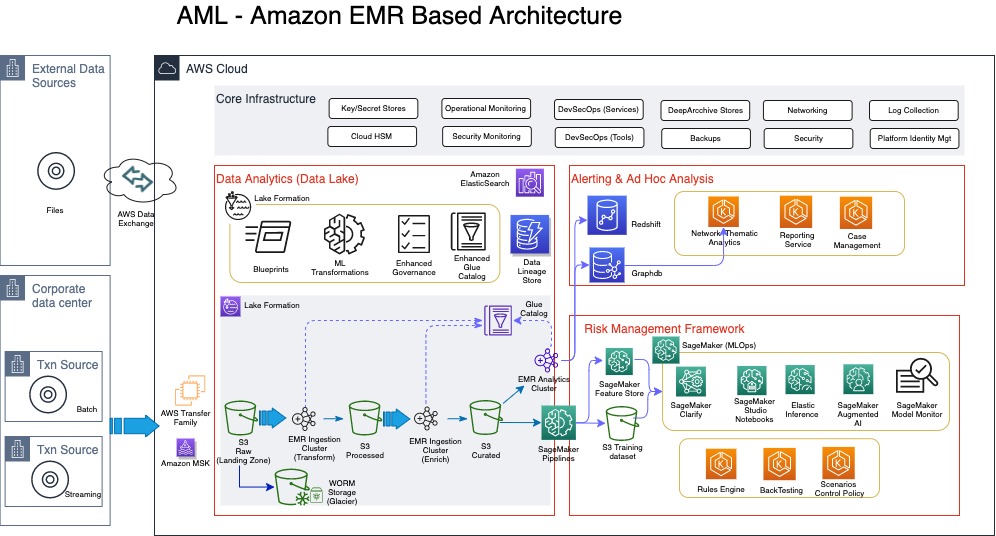I have found some time to read some articles during the holidays. In this post “Implement anti-money laundering solutions on AWS”, it looks at the the challenges with implementing transaction monitoring (TM) solutions. I have worked on a similar transaction surveillance project on a proprietary platform. So it would be interesting to see how AWS services can be leveraged to build a solution in the cloud from the perspectives of data analytics; risk management and ad hoc analysis.

Data Ingestion
First and formost, we need to ingest data into a central store that is secure and scalable. S3 is well suited for this purpose which can store structure and unstructured data without worrying capacity.
Raw data are often coming from various sources. To collect and get the data into AWS, AWS Transfer Family (SFTP) and Amazon MSK can serve for the batch and real-time requirements respectively.
Raw data often comes with various formats. It is required to parse, clean, and normalise to the unified formats before sending to downstream for further analysis. AWS Lambda is a swiss knife for this expect, especially now it supports up to 10 GB of memory and 6 vCPU cores.
For even more complicated transformation, enrichment, de-duplication, and entity resolution, EMR can be used as the ingestion cluster.
Data Governance
Data catalog can help to understand and locate the data. This catalog is provided either directly through AWS Glue or indirectly through AWS Lake Formation.
Data lineage provides a trace of the data from source to eventual downstream reporting. However, the post didn’t mention any AWS service can be used for data lineage.
Data security covers several aspects of dealing with requirements of encryption of data at rest and in transit. Some of the techniques include tokenization, encryption, generalization, masking, perturbation, redaction, and even substitution of personally identifiable information (PII) or sensitive data usually at the attribute level. Amazon Macie, a fully managed data security and data privacy service that uses ML and pattern matching to discover and protect sensitive data, can be used to automate PII discovery.
Risk management framework
The risk management framework I worked with the TS project are mainly rule-based controls which are derived from the expertise with many years of experience. It contains thresholds, rules, algorithms to detect and report the suspicious transactions. It is true that these rule-based implementations quickly become complex and difficult to maintain, as the regulatory changes or criminals find new and sophisticated ways. The post shows an increasing trend of the use of machine learning techniques in suspicious transaction detection. Amazon SageMaker is the service which allows data scientists and developers to easily build, train, and deploy ML models.